What are the characteristics of the ideal LAMS machine? Lightweight first off as it’s easier to regain control if something goes wrong.
Having a strong front brake is also important when unexpected things happen in front of you. Strong engine braking doesn’t hurt, for you can set corner speed easier.
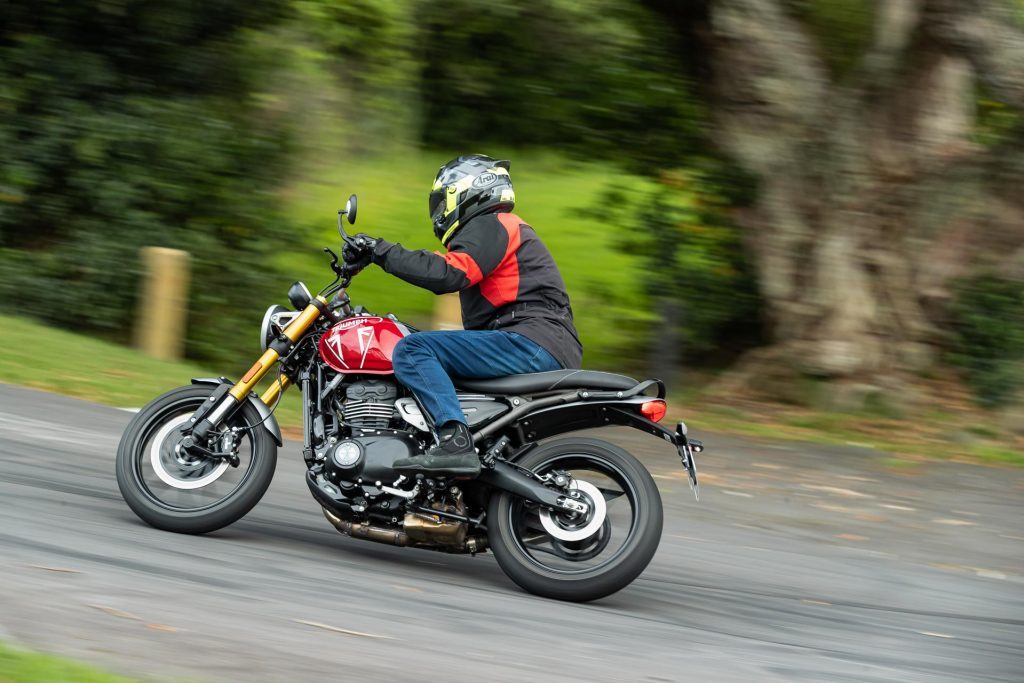
Good tyres help as you’re less likely to hit the deck. Having a good chassis and compliant suspension also contribute, reducing the risk of trouble in the first instance.
What else? Decent fuel economy helps, and an upright riding position is a bonus; learners will see more than if crouched in a tuck.
Having clear dials is important; eyes up so you don’t want to be distracted for too long.
Anything else? Ah, yes, price.
Naturally you don’t want to spend too much on your first bike so anything convincingly the right side of $10k is a bonus.
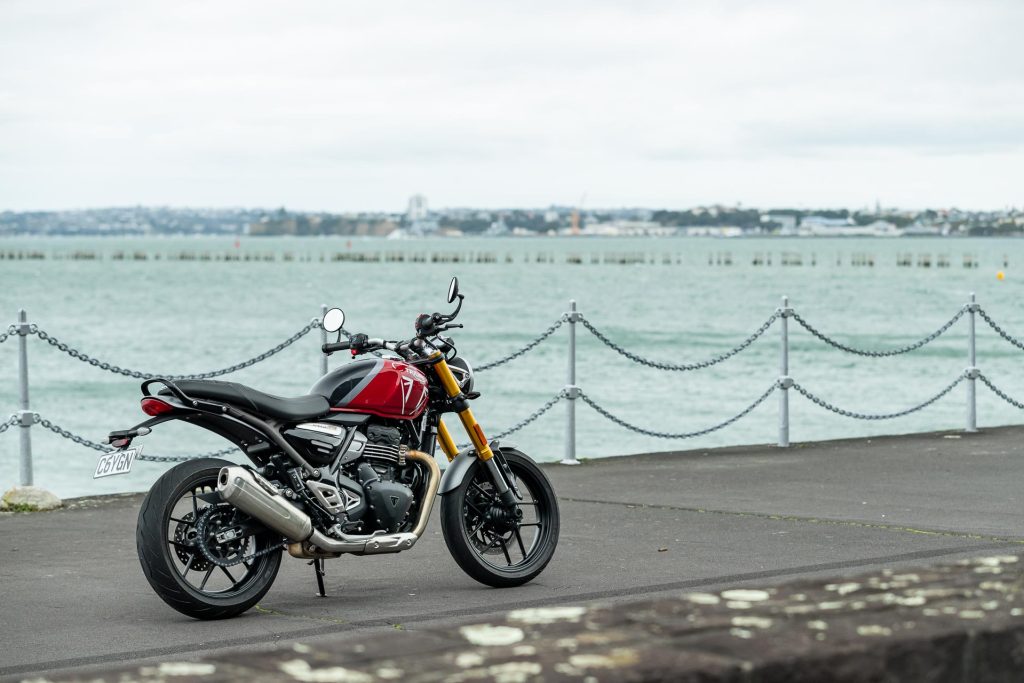
Buying new also means you get a couple of years of warranty and peace of mind. Extended service intervals are a final bonus.
So does anything actually fit the bill? The last line in the last paragraph is a clue. Triumph is famous for its 16,000km/12-month service intervals.
We reckon Triumph’s new Speed 400 comes pretty darn close to the above ideal learner scenario. It ticks most of those boxes.
Essentially, this is a two-pronged LAMS attack because there’s the road-oriented Speed 400 you see here, and the Scrambler 400 X light off-roader.
Both use a liquid-cooled Euro 5-ready 398cc four-valve dohc single. Dubbed TR (Trophy) with output of 30kW and 38Nm, each machine is designed for ease of riding.
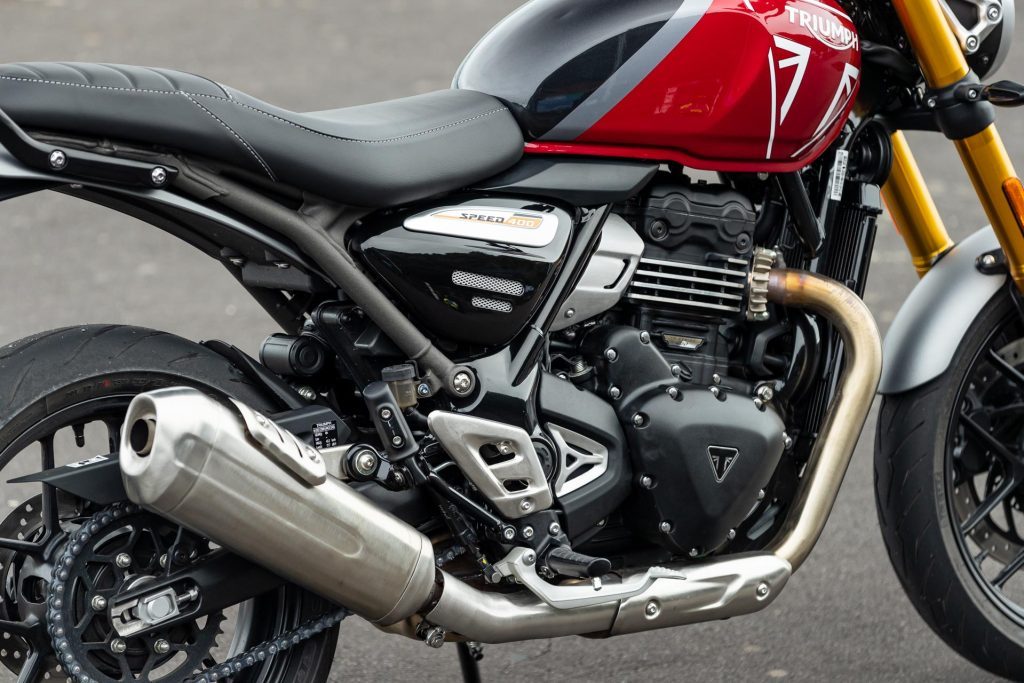
On the Speed 400 you just massage its midrange. It feels at home in the 3000-6000rpm area. Top revs are around 9000, though the dinky little rev counter makes it hard to see precisely.
Clearly they don’t want you to do that because the tacho starts flashing at about 120km/h in top. It acts like a speed limiter. Cruising at 100km/h in top feels effortless.
We really liked this at the launch and now that we’ve had a bit more saddle time we believe this could be about the best value to be had in the LAMS area at $7995.
It’s attractive (though 400 X looks better) quick, comfy, frugal and nicely finished, like all Triumphs.
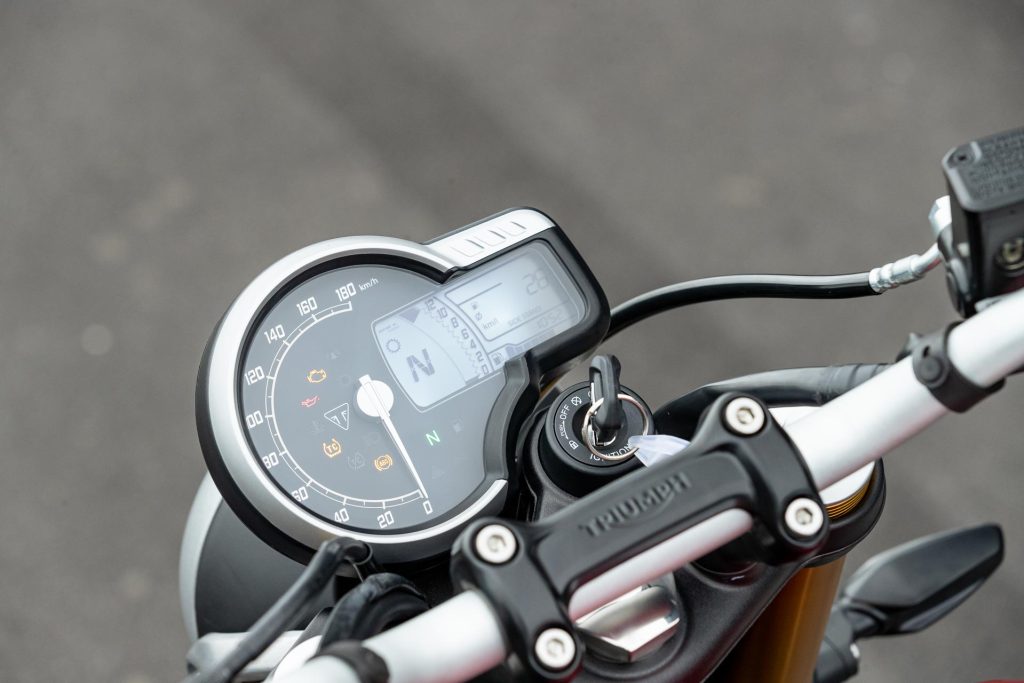
Being a naked bike you do notice the wind when it’s blowing. However, one of the accessory items is a fly screen, and we’d fit that straight away. It comes as a clear see-through item and costs $278, including the fitting kit.
Mention of screens, we’d prefer a colour TFT unit like some of the smaller machines have nowadays; they’re just easier to read.
However, this is a member of Triumph’s modern classic series so we can cut it some slack; it has an analogue speedo for that reason and most learners will have much younger eyes than mine.
A pity there isn’t an option for a digital speed readout in the info area. At least there’s a gear indicator, always handy. We left info on instantaneous fuel use because the numbers are so pleasing.
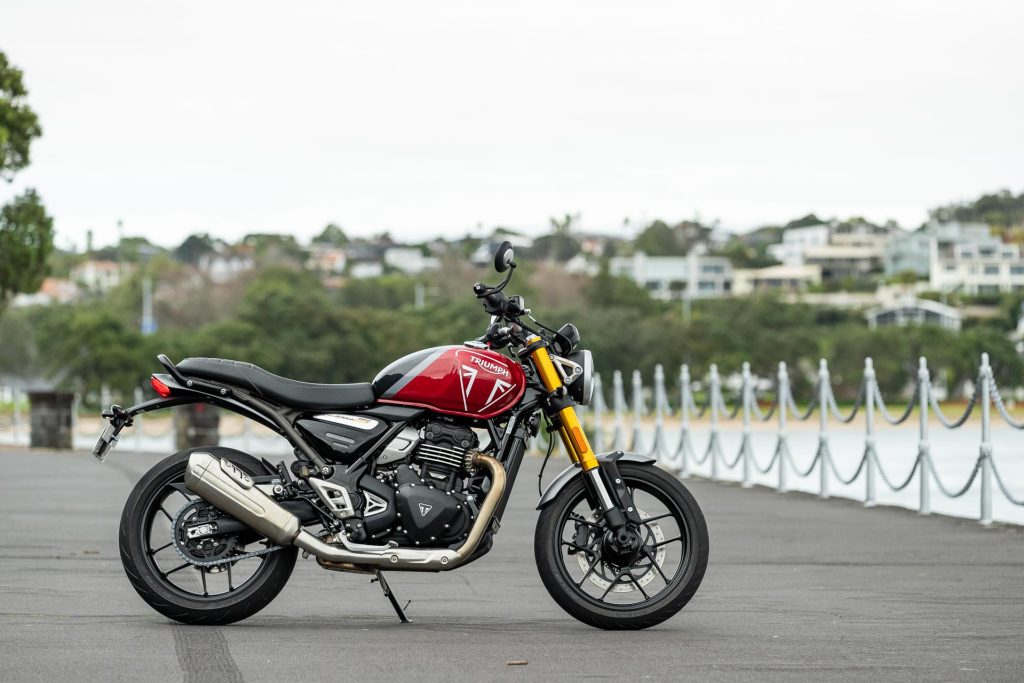
At 100km/h, 5800rpm in top, it’s doing 33km/L or 3.3L/100km. Not bad for something without wind protection. The fly screen might improve on that slightly.
We had to wheel it out of Triumph’s garage and it’s almost ridiculously lightweight at 170kg ready to ride. Being a single there’s not the centralised mass of a twin so it is just insanely chuckable.
It changes lines with a hint of bar pressure, avoiding potholes at the last minute, dodging birds on the road. Cornering prowess is above and beyond for something at this price point.
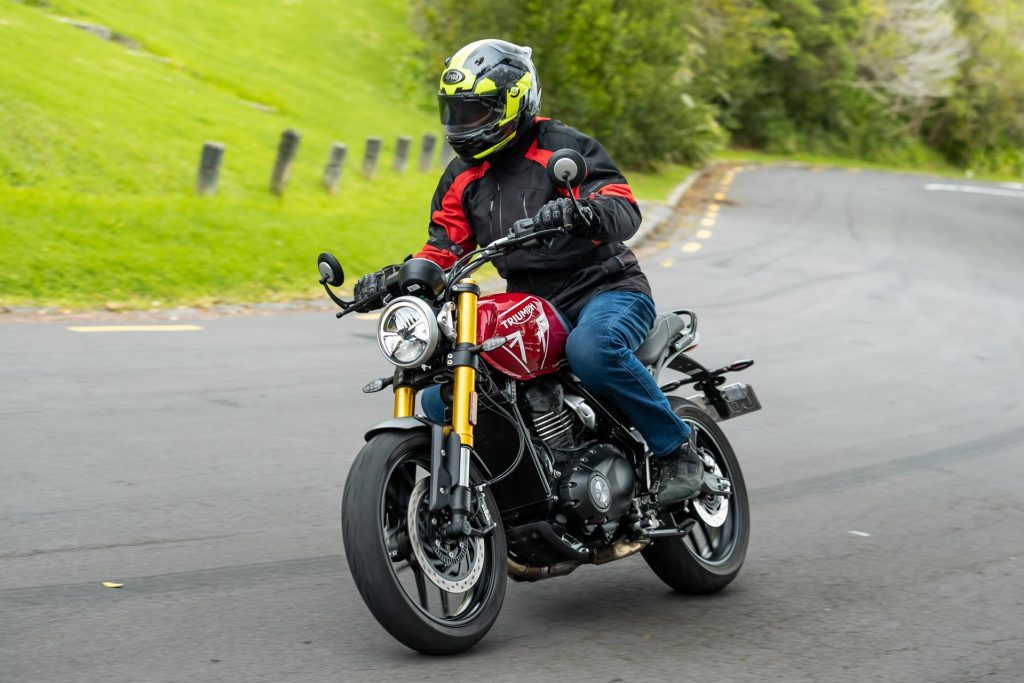
We were astonished to find Pirelli Diablo Rossos as the contact patches. You’d not credit how this holds corner speed; think Moto3 for the road. And on that, braking ability is just as robust.
The bite of these brakes is amazing, reflected in a low 40m figure for the 100-0 stoppie. Impressive given cooler winter conditions.
So are performance figures. It’s as quick as the CFMoto 450 twin we tested last month, but it’s only a 400 single.
There’s decent engine retardation too, so most of the time you don’t need any more than a touch of actual brake intervention to set corner speed.
Vibes are minimal for a single. This features bar end mirrors that give a good rearward view and are clear at 100 but start to blur above 110.
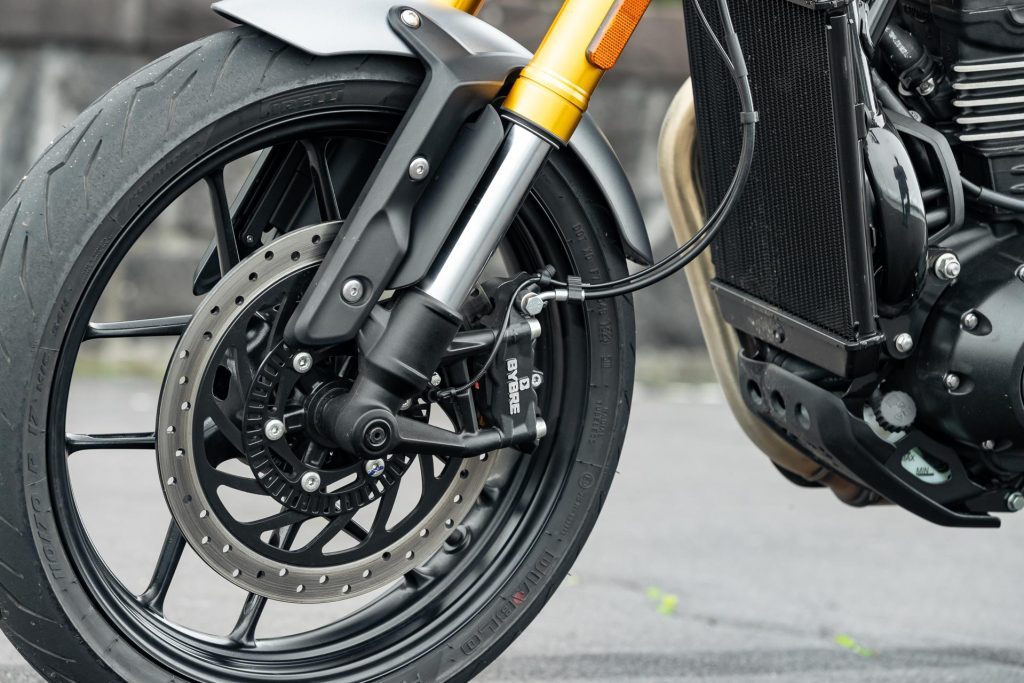
The Speed 400 is relatively inexpensive because it is made in India by Bajaj. That’s the same company that has been producing smaller KTM motorcycles over the past decade.
The quality is right up there, and compares with anything out of Triumph’s other factories. Sure, there are a few cost compromises. Clutch and brake levers aren’t adjustable but they’re fine as they are.
Suspension up front is fixed, and is adjustable for preload at the rear. Again, it’s fine as it is, the ride sufficiently compliant. That’s thanks in part to a comfy seat and its natural riding position.
Essentially, it’s hard to imagine a more fit-for-purpose entry-level LAMS bike than this. It simply does the basics in an above-and-beyond fashion.
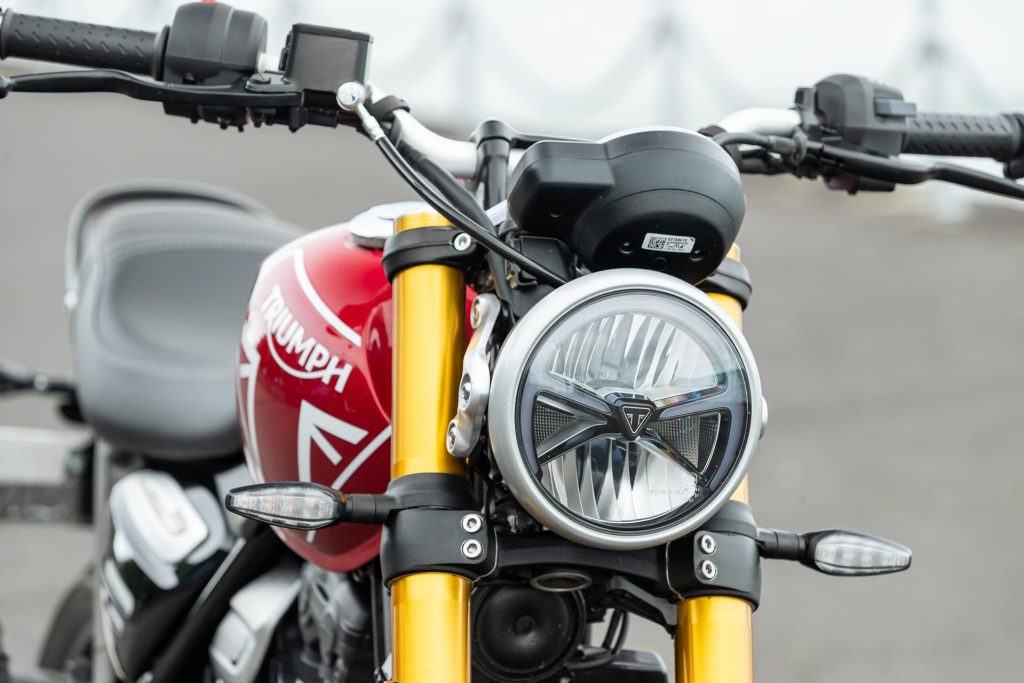
If you’ve something of an off-road bent, an extra $1000 gets you the Scrambler 400 X edition with a bigger 19-inch front wheel, longer travel suspension and an extended wheelbase for dual-purpose action.
It also comes with protection for the headlight, radiator and sump, as well as handguards, a handlebar brace and an extended front mudguard.
The seat sits 45mm higher on the Scrambler (835mm) while the handlebars are also optimised for riding while standing.
It’s a touch heavier at 179kg and ABS is switchable but is otherwise much the same.
Given the cost of living crisis the least expensive Triumph ever couldn’t have arrived at a better time.
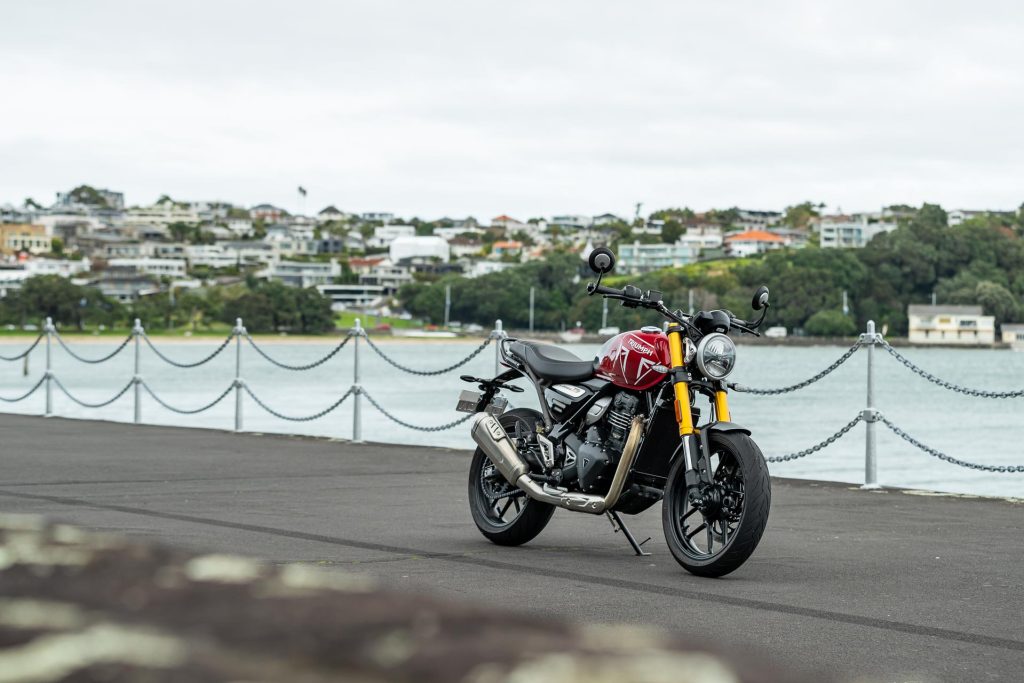
That it copes so well with Kiwi conditions makes it even more appealing.
That it undercuts other 400s just adds to the allure. Arugably, it’s the best value LAMS bike yet.
| Model | Triumph Speed 400 |
| Price | $7,995 |
| Format | Liquid-cooled / Fuel Injected / Single |
| Engine | 398cc |
| Max Power | 29 kW @ 8000 rpm |
| Max Torque | 38 Nm @ 6500 rpm |
| Cylinder Head | DOHC / 4v |
| Gearbox | 6-speed |
| Drivetrain | Chain final drive |
| Front Suspension | 43mm USD forks, no adjustment |
| Rear Suspension | Monoshock, preload adjustable |
| Front Brakes | Four-piston calipers, 300mm disc |
| Rear Brakes | Single-piston calipers, 230mm disc |
| Safety Systems | ABS, TC |
| Tyre Size | F – 110/70R17 / R – 150/60R17 |
| Tyres | Pirelli Diablo Rosso 3 |
| Wheelbase | 1377mm |
| Seat Height | 790mm |
| Rake/Trail | 24.6 degrees / 103mm |
| Fuel Capacity | 13 L |
| Measured Weight | 170 kg |
| Weight Distribution | F – 84 kg / R – 86 kg |
This story first appeared in the August 2024 issue of NZ Autocar magazine.


